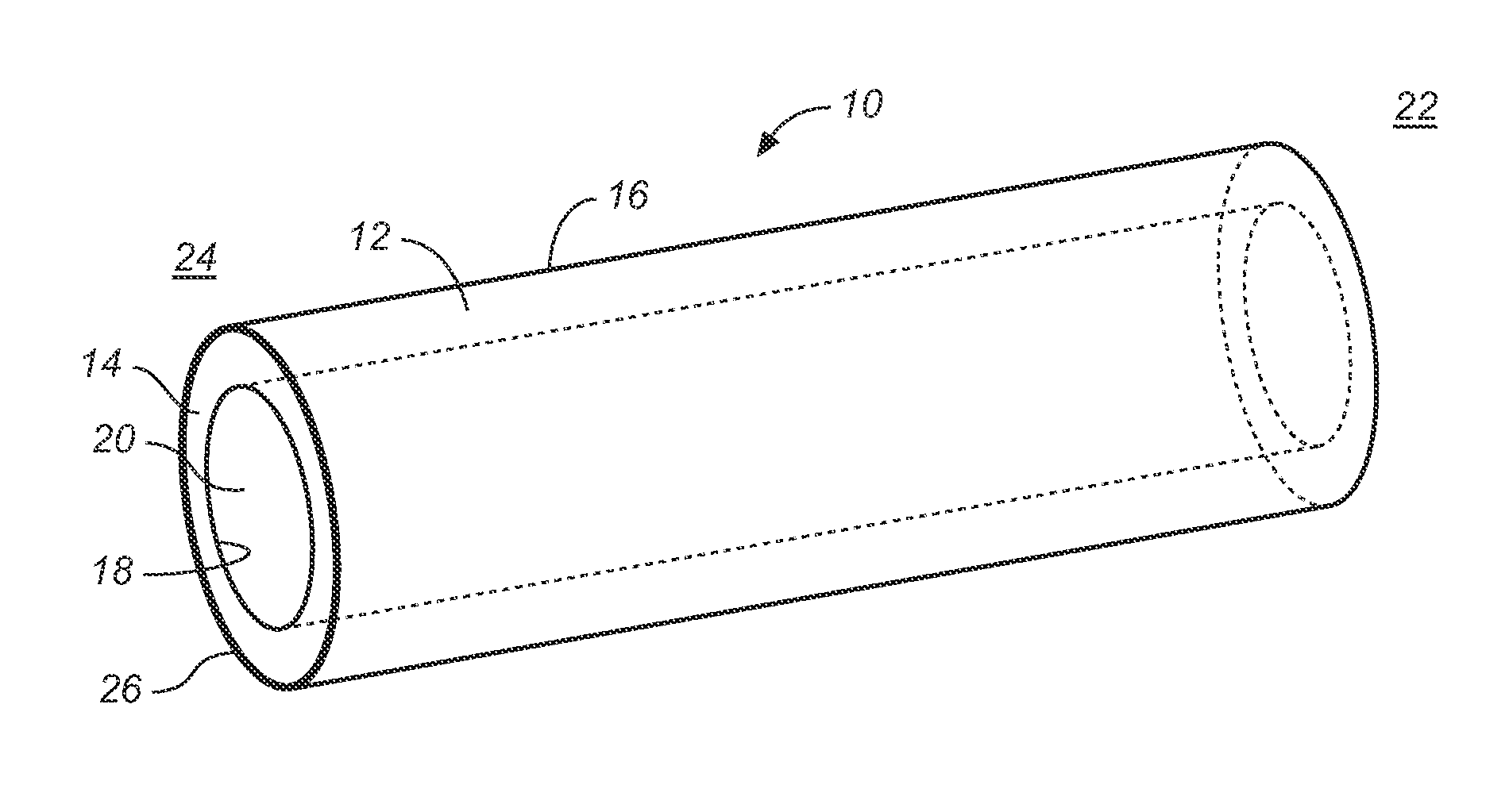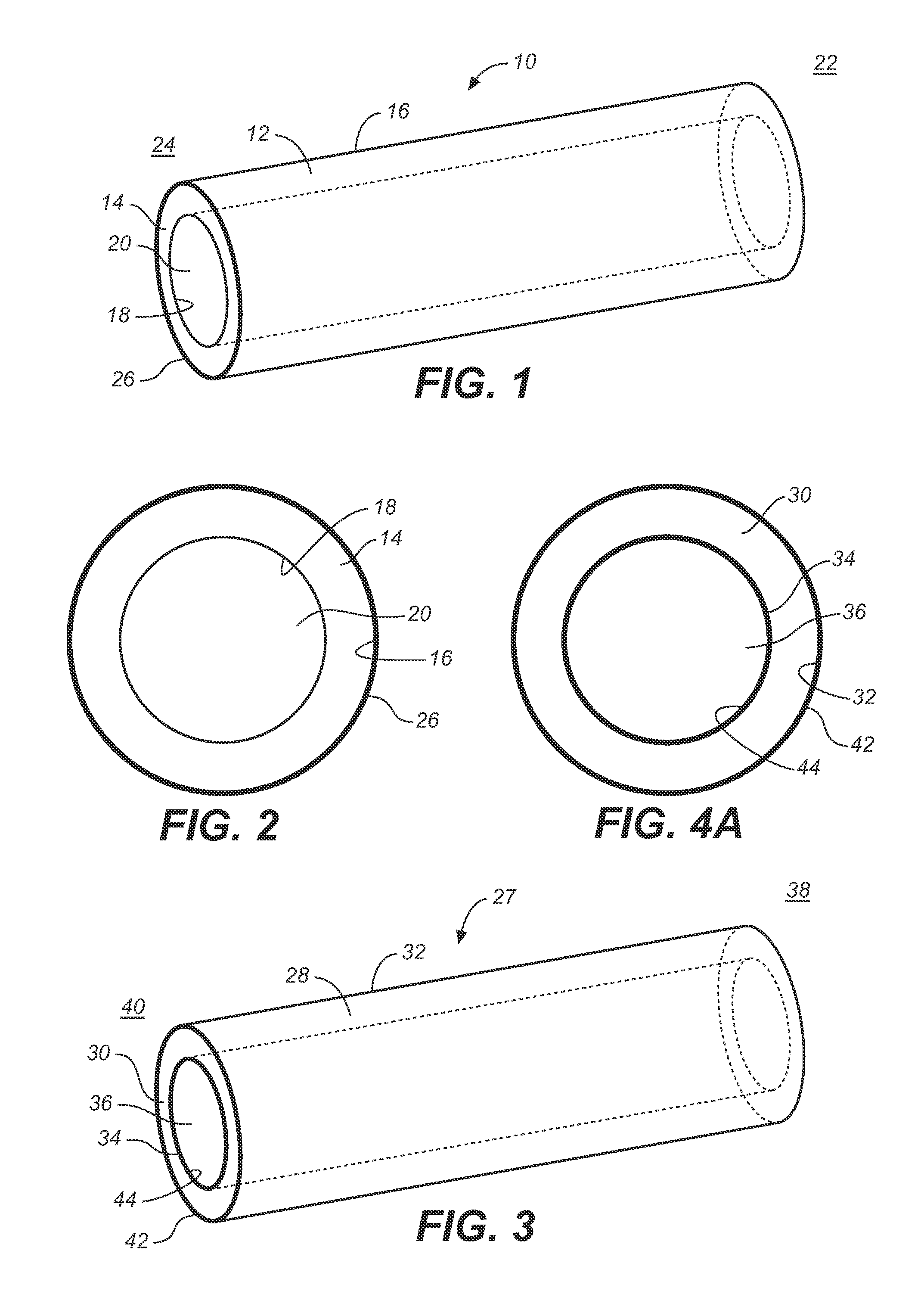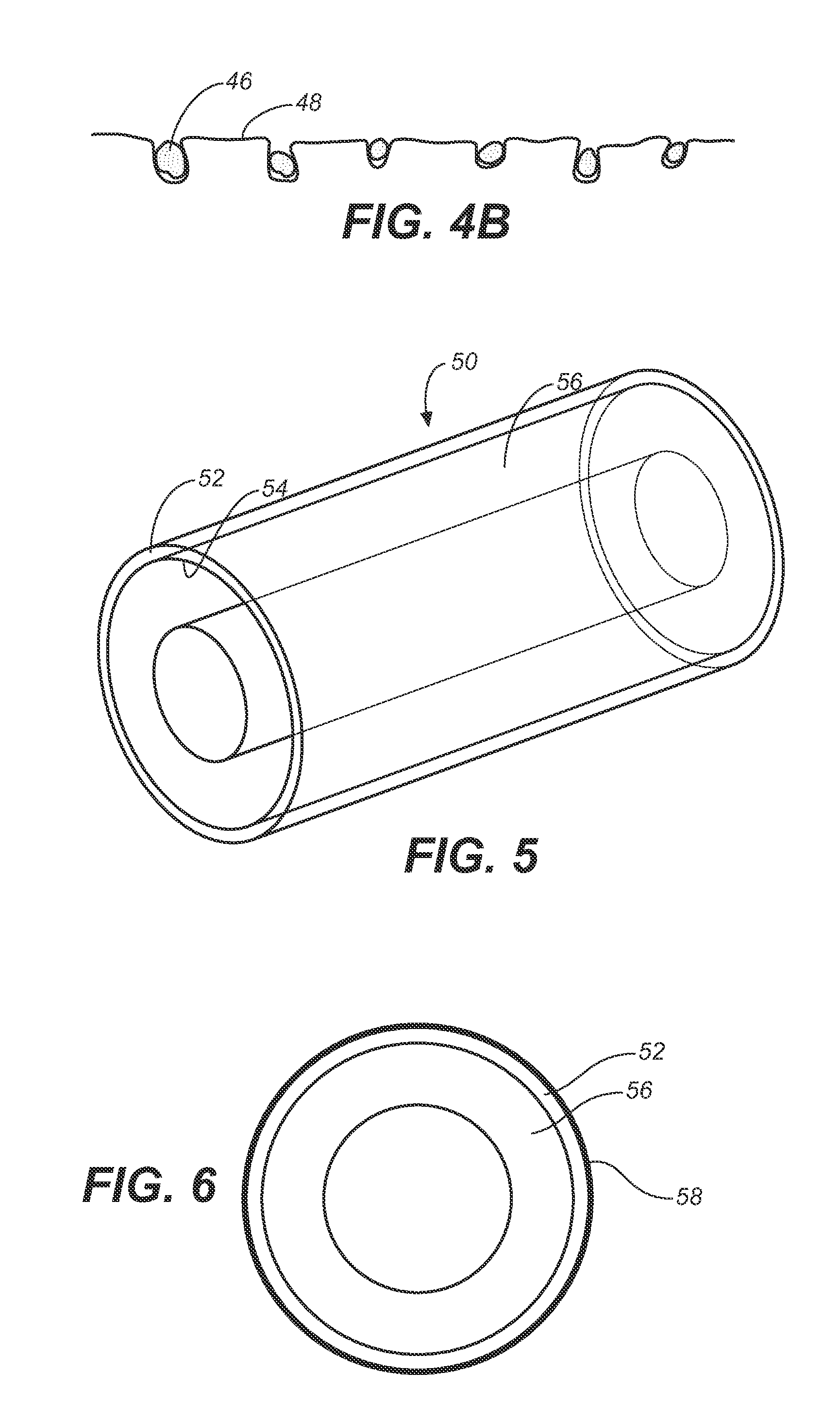Photocatalytic disinfection of implanted catheters
a technology of photocatalytic disinfection and implanted catheters, which is applied in the field of implantable, “indwelling” catheters, can solve the problems that the effective concentration of oxidizing agents cannot be safely added to the blood and is limited to a local region within the body, and achieves the effect of increasing the tear strength of the catheter
- Summary
- Abstract
- Description
- Claims
- Application Information
AI Technical Summary
Benefits of technology
Problems solved by technology
Method used
Image
Examples
Embodiment Construction
Definitions and Nomenclature
[0060]Unless defined otherwise, all technical and scientific terms used herein have the meaning commonly understood by one of ordinary skill in the art to which the invention pertains. Specific terminology of particular importance to the description of the present invention is defined below.
[0061]In this specification and the appended claims, the singular forms “a,”“an” and “the” include plural referents unless the context clearly dictates otherwise.
[0062]The term “implantable catheter” as used herein refers to a catheter that is implanted or inserted in the human body either temporarily or permanently.
[0063]The term “inhibition” as applied to the capability of the invention to inhibit biofilm growth refers to the process of killing microorganisms in a biofilm that is present or forming on a surface, and thus includes all of the following: elimination or destruction of a biofilm; disruption of a biofilm; reduction in the thickness of a biofilm; the killin...
PUM
| Property | Measurement | Unit |
|---|---|---|
| Fraction | aaaaa | aaaaa |
| Time | aaaaa | aaaaa |
| Time | aaaaa | aaaaa |
Abstract
Description
Claims
Application Information
 Login to View More
Login to View More - R&D
- Intellectual Property
- Life Sciences
- Materials
- Tech Scout
- Unparalleled Data Quality
- Higher Quality Content
- 60% Fewer Hallucinations
Browse by: Latest US Patents, China's latest patents, Technical Efficacy Thesaurus, Application Domain, Technology Topic, Popular Technical Reports.
© 2025 PatSnap. All rights reserved.Legal|Privacy policy|Modern Slavery Act Transparency Statement|Sitemap|About US| Contact US: help@patsnap.com



